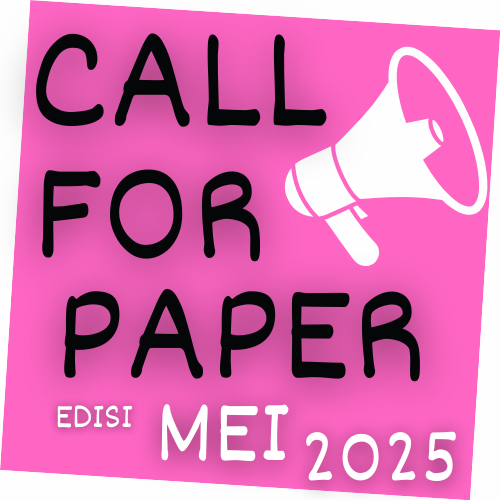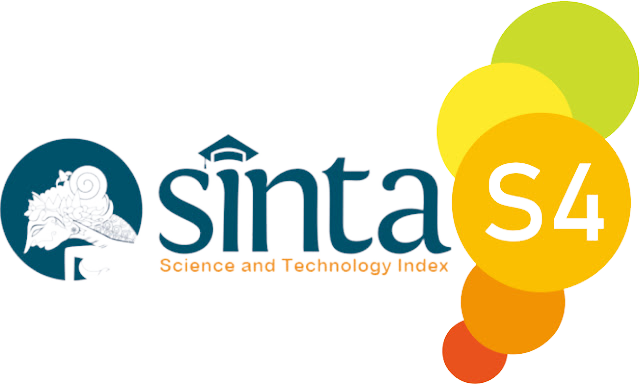PELATIHAN PENGEMBANGAN PRODUK KAIN ULOS SEBAGAI SUVENIR KHAS DESA MEAT TOBA SAMOSIR
DOI:
https://doi.org/10.21460/servirisma.2022.21.11Keywords:
Lake Toba, Meat Village, Ragi Hotang, souvenir, ulos, woven fabricsAbstract
The Ministry of Tourism has named Lake Toba in North Sumatra as one of the five super priority destinations in Indonesia. Meat Village, which is located on the edge of Lake Toba, has also become one of tourism points development because it is not only rich in natural beauty but also has strong artistic and cultural elements. This training aims to empower the community, especially housewives, in developing the potential of ulos woven fabrics as souvenirs from the tourist village of Meat. This Community Service program was initiated by collecting data through interviews, surveys, and observations with the community and local village officials regarding the types, processes of making and marketing ulos cloth. The next stage is to organize a Training for Trainers (ToT) in order to assist participants in the training. The training was held for 2 days and was attended by 37 participants. On the first day of the training, participants were trained to make special packaging and shopping bags for the Ragi Hotang ulos cloth, the weaving process of which is one of the tourist attractions of Meat Village. Packaging and shopping bags are an effort to form a positive Meat Tourism Village brand image. Then on the second day, participants practiced developing various products from Sadum ulos cloth. After participating in this training, it is hoped that the local community can market Meat Village souvenir products directly to tourists without going through intermediaries so as to further improve welfare. Through this souvenir product, it is also expected to help support the readiness of Meat Village as a tourist village.
References
Alamudi, A. A. (2021, April 19). Loka Data. (Kanal Desa) Retrieved Agustus 1, 2021, from https://desa.lokadata.id/artikel/memaksimalkan-status-desa-wisata-dengan-produk-warga
Ardilla Nathaurisia, Yayu Indrawati, I GPB. Sasrawan Mananda . (2014). Pengaruh Citra Merek (Brand Image) dan Kepuasan Wisatawan terhadap Loyalitas Wisatawan pada Bali Adventure Rafting. Jurnal Industri Perjalanan Wisata (IPTA), 2(1), 27-30.
Astuti, E. P. (2014). Ornamen Tradisional Indonesia: Potret Kemanusiaan dan Identitas . In A Review Perspective of Arts and Arts Education (p. 283). Yogyakarta: UNY Press.
Dinisari, M. C. (2021, Februari 9). Bisnis Lifestyle. (Bisnis Indonesia Group Media) Retrieved Agustus 1, 2021, from https://lifestyle.bisnis.com/read/20210209/104/1354251/mengenal-5-kain-uloskhas-danau-toba-yang-sarat-makna
Djairan. (2020, October 20). iNews.id . (iNews) Retrieved August 1, 2021, from Travel: https://www.inews.id/travel/destinasi/kemenparekraf-kembangkan-19-desa-wisata-danautoba/3
Juraidi. (2021, Februari 28). Antara News. (Kantor Berita Antara) Retrieved Agustus 1, 2021, from https://sumut.antaranews.com/berita/371784/desa-meat-pusat-kerajinan-ulos-di-danau-toba
Karolina Sianipar, Gugun Gunardi, Widyonugrahanto, Sri Rustiyanti. (2015). Makna Seni Ukiran Gorga pada Rumah Adat Batak. Jurnal Panggung, 25(3).
Manurung, P. (2019). Ruang Bermain Anak di Desa Meat, Kabupaten Toba Samosir. Seminar Nasional Kearifan Lokal IV Universitas Sumatera Utara. Medan.
Panggabean, R. (2009). Sadum: Traditional and Contemporary. Journal of Visual Art and Design, 3(2), 167-174.
Panjaitan, O. F. (2010). Kamus Bahasa Batak Toba. Depok.
Priambodo, M. P. (2015). Implementasi Kebijakan Ekonomi Pariwisata dan Perwujudan . Jurnal Ekonomi dan Studi Pembangunan (JESP), 7(2), 27-34.
Samosir, M. K. (2019, Oktober 19). Info Publik. (Kementerian Komunikasi dan Informasi Republik Indonesia) Retrieved Agustus 5, 2021, from https://infopublik.id/kategori/nusantara/381043/desa-meat-di-tobasa-memiliki-daya-tarikkhusus
Siahaan, R. (2006). Gorga Singa-singa sebagai sumber Ide Penciptaan Karya Seni Lukis. Medan: Unimed Press.
Siburian, T. P. (2017). Makna Simbolik Ornamen Gorga pada Budaya Batak Toba. Yogyakarta: Institut
Seni Indonesia.
Sihotang, H., Purwanto, M. Y., Widiatmaka, & Basuni, S. (2012). Model Konservasi Sumberdaya Air Danau Toba. Jurnal Pengelolaan Sumberdaya Alam dan Lingkungan, 2(2), 65-72.
Silalahi, U. (2017). Metode Penelitian Sosial Kuantitatif. Bandung: Refika Aditama.
Sumartono. (2017). Metodologi Penelitian Kualitatif Seni Rupa dan Desain. Jakarta: Pusat Studi Reka Rancang Visual dan Lingkungan FSRD Universitas Trisakti.
Wijaya, Y. G. (2019, Desember 5). Kompas Travel. (Kompas) Retrieved Agustus 1, 2021, from https://travel.kompas.com/read/2019/12/05/080700827/berita-foto-suasana-desa-meat-desaperajin-
ulos-tradisional
Downloads
Published
How to Cite
Issue
Section
License
Copyright (c) 2022 Christmastuti Nur

This work is licensed under a Creative Commons Attribution-NonCommercial-NoDerivatives 4.0 International License.
Authors who publish articles in SERVIRISMA agree on the following rules:
1. The author grants non exclusive royalty free rights, and is willing to publish articles online and complete (full access). With such rights SERVIRISMA reserves the right to save, transfers, manages in various forms, maintains and publishes articles while keeping the author's name as the copyright owner.
2. Each author contained in the article has contributed fully to the substance and intellectual, and is accountable to the public. If in the future there is a copyright infringement notification then this will be responsibility of the author, not SERVIRISMA .









